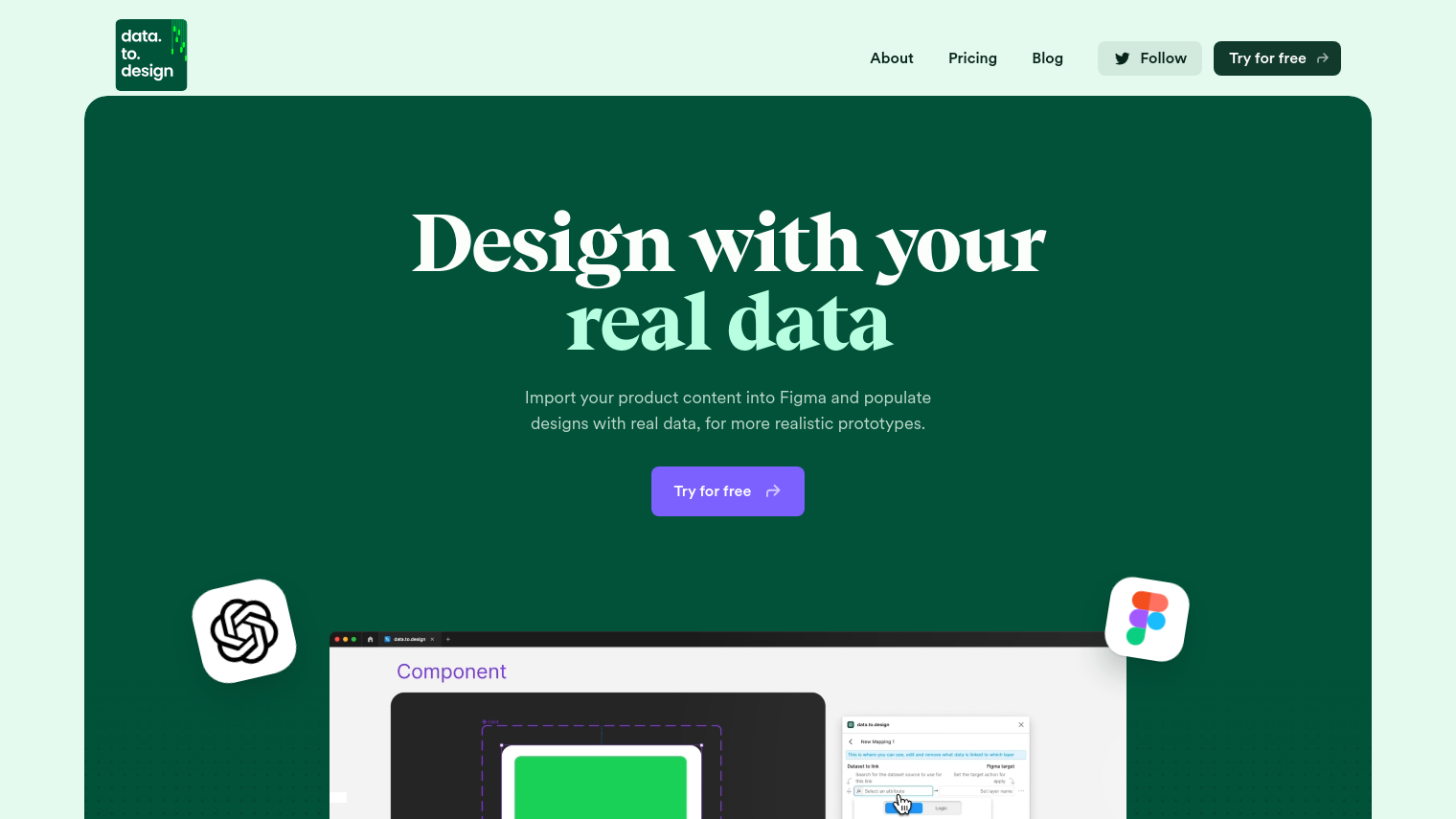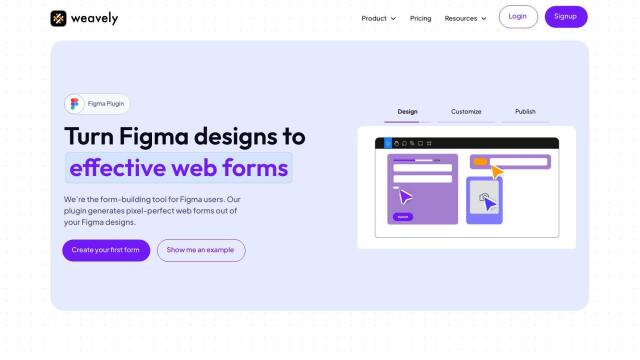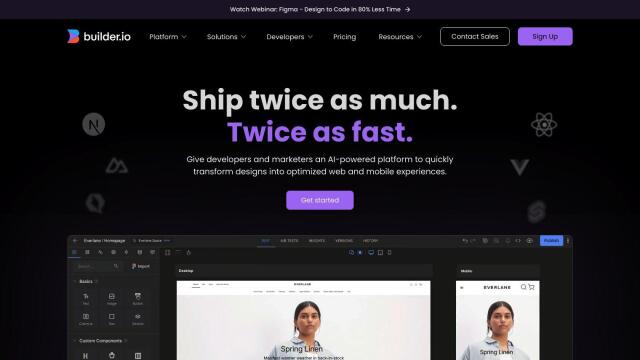data.to.design is a service that lets you generate and fetch real content so you can iterate faster. It also works directly with Figma so you can fill designs with real data for more realistic prototypes.
For designers, data.to.design lets you bring product content into Figma and fill designs with real data. That means you can build more realistic and stress-tested designs by tapping into a range of content sources. It also lets you bring logic to your designs, letting you set up mappings between content and components and apply if-this-then-that logic to your variants.
Some of the key features of data.to.design include:
- Design with Real Data: Fill designs with real content for more realistic prototypes.
- Stress Test Designs: Use real content to test designs under different conditions.
- Add Logic to Designs: Set up mappings and apply logic to components.
- Figma Integration: Connect directly to Figma to supercharge your design workflow.
data.to.design is geared for designers and product teams who want to accelerate their design workflow and build more realistic designs. It can handle a variety of data formats, including .CSV files, Notion, Airtable, JSON files and Google Sheets.
Pricing for data.to.design includes:
- Free: 1 user, 2 datasets, 3 mappings, and 1000 records per dataset for personal use.
- Pro: $12/month for 1 user, 20 datasets, 30 mappings, and 10,000 records per dataset for professional use.
- Team: $99/month for 5 team members, 100 datasets, unlimited mappings, and team management features for small teams.
- Enterprise: Custom plans for large teams, including all team features and over 100 datasets.
Using data.to.design, designers can avoid spending time making assumptions and guesses, build more realistic prototypes and design with a better understanding of real-world user experiences. It's designed to give designers access to tools that typically require engineering expertise so they can ship more impactful products to users.
Published on June 9, 2024
Related Questions
Tool Suggestions
Analyzing data.to.design...







